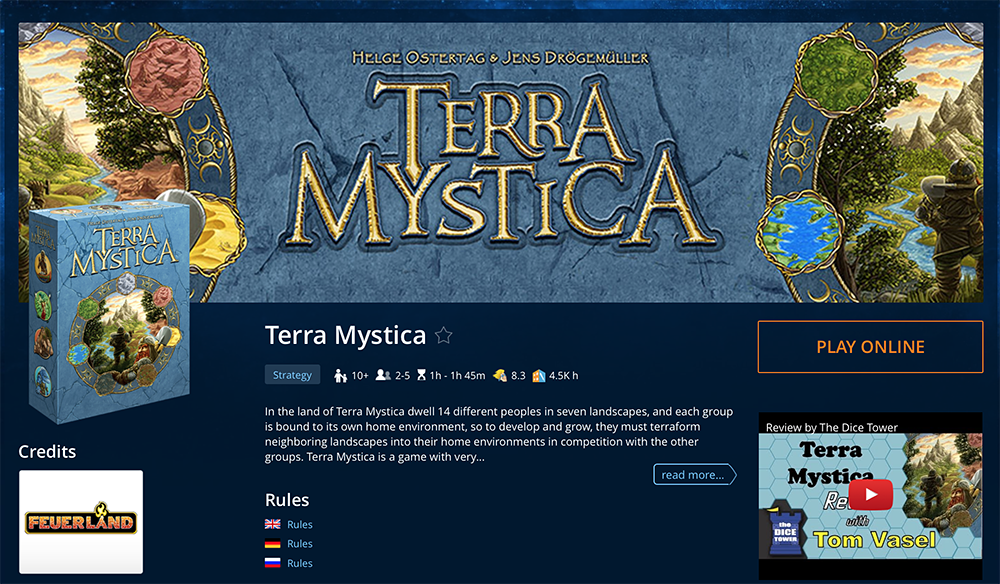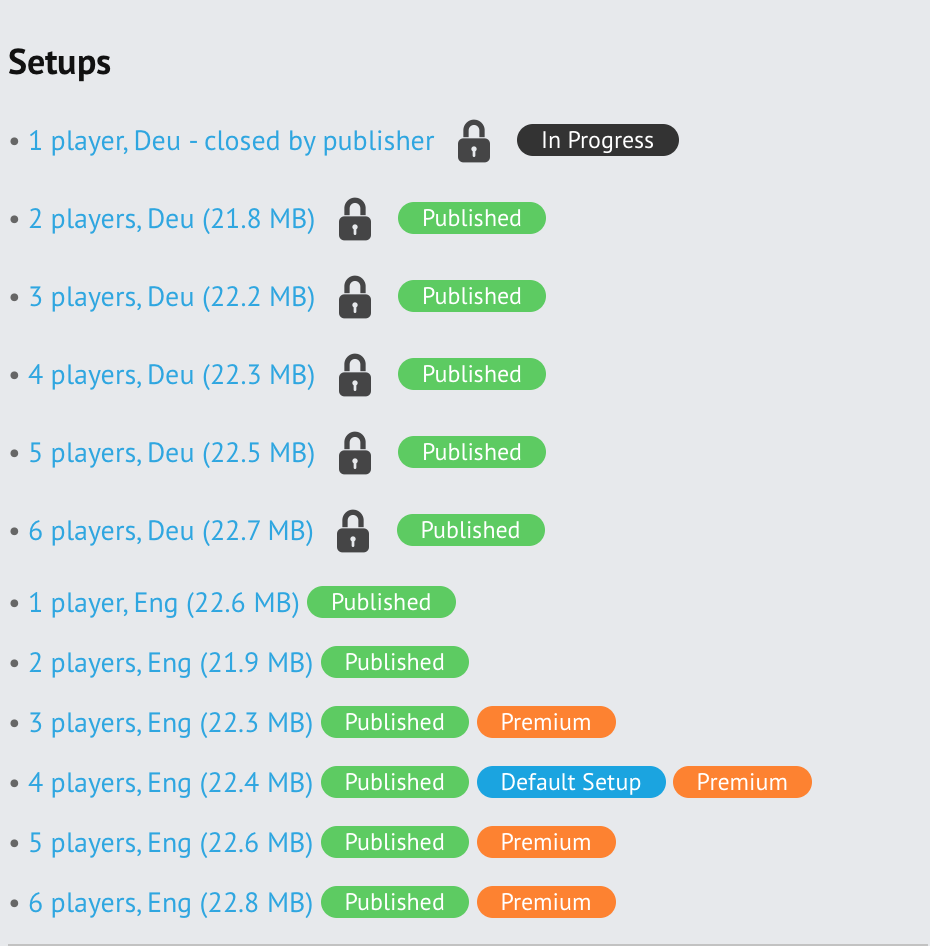Find below the Game Designer Checklist, which we ourselves use when creating games on Tabletopia. Just cross-check your game against it to make sure you did not forget any important things while creating the game.
 Game Details
Game Details
Game details will be displayed on the game’s page in the catalog. They will serve as the face of the game and will let players find your game and learn it before starting to play.

These details are required for all public games on the portal. See Filling In a Game Form to learn how to add them and which purpose each item serves.
- 3D box
- Banner
- Links (optional)
- Rules
- Game name
- Game type
- Link to BGG page (optional)
- ASIN (optional)
- Age
- Playing time
- Description and tips how to play the game in Tabletopia
- Credits (optional)
- Game gallery
Objects
Objects are the game components you use for your game.
Make sure you utilized the correct objects and optimized their graphics to ensure that game can be opened in all browsers and functions correctly. See Types of Game Objects, Objects Catalog and Preparing Graphics for details.

Before publishing the game make sure that:
- Object types are chosen correctly
- Graphics for objects is optimized:
- Graphics quality (compression artifacts vs. file size)
- Image size: default 10 pixels = 1mm; max size 4000 x 4000 pixels – for Game Boards, max size 2000 x 2000 pixels – for Tokens, Tiles and Cards (use scaling whenever possible)
- No visual artefacts
- No lighting problems (overbright e.g. yellow and white colors, or too dark e.g. vertical tokens)
- Contrast and visibility during game play
- Colors are chosen correctly (different or the same if needed)
- Sizes of objects (similar to the physical game components, steady during game play, scaling if needed).
- You use Hidden Areas when it necessary.
Setups
Setup is the set of game components you need to play the game which may differ depending on the number of players, language, and some other factors. See Game Setups for extensive info.
We encourage you to create several setups for each game to allow players to choose the setup that suits them best.

You will need to check the following things:
- The number of setups needed
- Number of players (seats and their colors)
- Language dependency
- Edition name (optional)
- Setup access level
- Player statuses (optional)
- Object behaviors are set (optional), see Object Behaviors
- Initial and player cameras are set
- Components correspond to the seat colors
- The player components are placed in clockwise order in the player seat color sequence from left to right
- All of the game components are present, no superfluous components, no tilted or overturned objects
- Aesthetics, see Tips to Improve Visual Design of Your Game
- Comfort of play and usability
- Size of each setup is not more than 30-40 MB (less than 20 MB is recommended)
- Setup is published
Play Zones
Play zones are special rooms that you can create for the purpose of playtesting or for demonstration to partners/publishers.
They are usually needed when the game is not yet open for the general public or when you need to create a separate free play zone for promotion, demonstrations, etc. See Opening and Sharing Games for more info.
If you have any play zones for your game, check that they function correctly:
- Links to Play zones are set
- Setups in Play zones are chosen
- Play zone background image aesthetics (the first image in game gallery)
Also see our Usability Guide for Creating Games on Tabletopia for more information.
